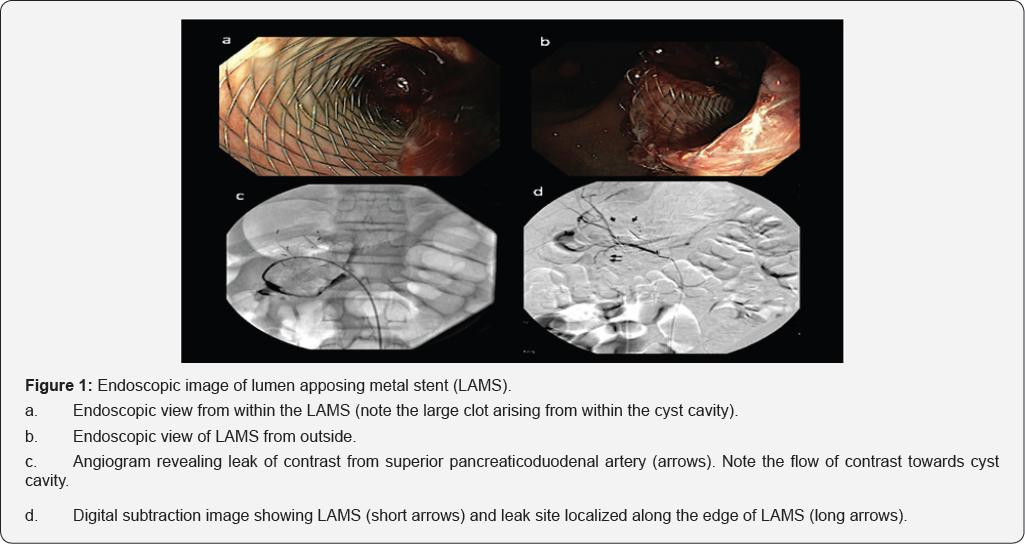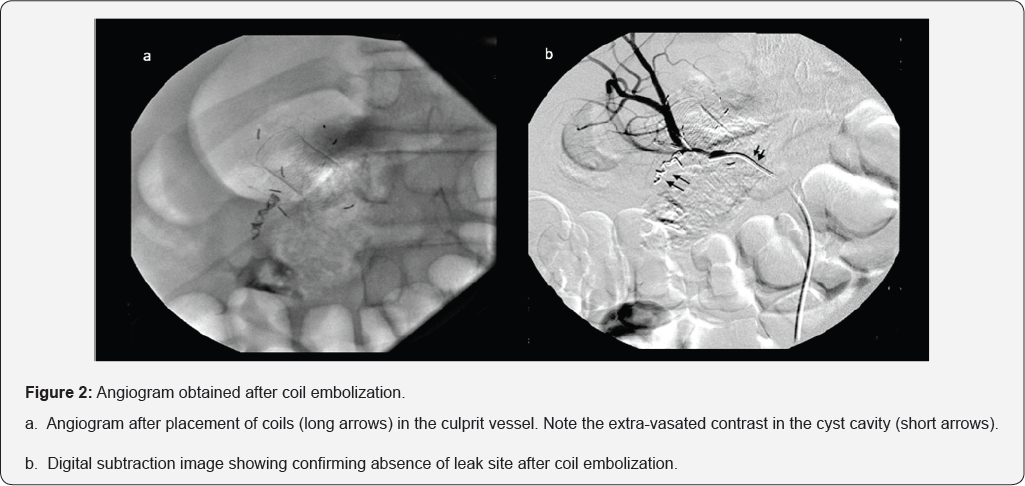Endoscopic Drainage of Walled off Necrosis - A "Multidisciplinary Affair"?
Zaheer Nabi1, Jagdeesh R Singh2, Sundeep Lakhtakia1 and Nageshwar Reddy D3
1Consultant gastroenterologist, Asian institute of Gastroenterology, India
2Consultant radiologist, Asian institute of Gastroenterology, India
3PChairman and Chief Gastroenterologist, Asian institute of Gastroenterology, India
Submission: September 15, 2017; Published: November 21, 2017
*Corresponding author: Zaheer Nabi MD, Asian Institute of Gastroenterology, 6-3-661, Somajiguda, Hyderabad - 500 082, India, Tel: +91-40-2337 8888; Email: zaheernabil978@gmail.com
How to cite this article: Zaheer N, Jagdeesh R S, Sundeep L, Nageshwar R D. Endoscopic Drainage of Walled off Necrosis - A “Multidisciplinary Affair”?. Adv Res Gastroentero Hepatol 2017; 7(5): 555723. DOI: 10.19080/ARGH.2017.07.555723
Case Report
A 12-year old boy was hospitalized with history of acute necrotizing pancreatitis (7 weeks). Evaluation revealed large walled off necrosis (WON). The child had persistent symptoms in form of pain abdomen and intolerance to oral diet. Endoscopic ultrasound (EUS) guided drainage was performed using a lumen apposing metal stent (LAMS). The drainage procedure was accomplished without any immediate untoward consequences. There was significant improvement in clinical symptoms as well as the size of WON on day 3 of drainage. However, the child had a large bout of hematemesis on day 4 of drainage. Gastroscopy revealed LAMS in situ and partially occludedby a large clot arising from the cyst cavity (Figure 1a & 1b). Urgent angiography was performed via right femoral artery, which revealed leak from superior pancreaticoduodenal artery (Figure 1c &1d). The leak of contrast was localized along the lateral edge of LAMS, near farther end. Coil embolization was done following which there was no extravasation of contrast from the artery involved (Figure 2a & 2b).


Intra-procedural bleeding can be largely evaded by EUS guidance which avoids intervening vessels [1,2]. In contrast, it may not be possible to prevent delayed bleeding i.e. 3-5 weeks after endoscopic drainage. The management of WON is therefore, a multidisciplinary affair involving interventional radiologists and surgeons [3].
References
- Nabi Z, Talukdar R, Reddy DN (2017) Endoscopic Management of Pancreatic Fluid Collections in Children. Gut Liver 11(4): 474-480.
- Varadarajulu S, Christein JD, Tamhane A, Drelichman ER, Wilcox CM (2008) Prospective randomized trial comparing EUS and EGD for transmural drainage of pancreatic pseudocysts (with videos). Gastrointest Endosc 68(6): 1102-1111.
- Nabi Z, Basha J, Reddy DN (2017) Endoscopic management of pancreatic fluid collections-revisited. World J Gastroenterol 23(15): 2660-2672.






























